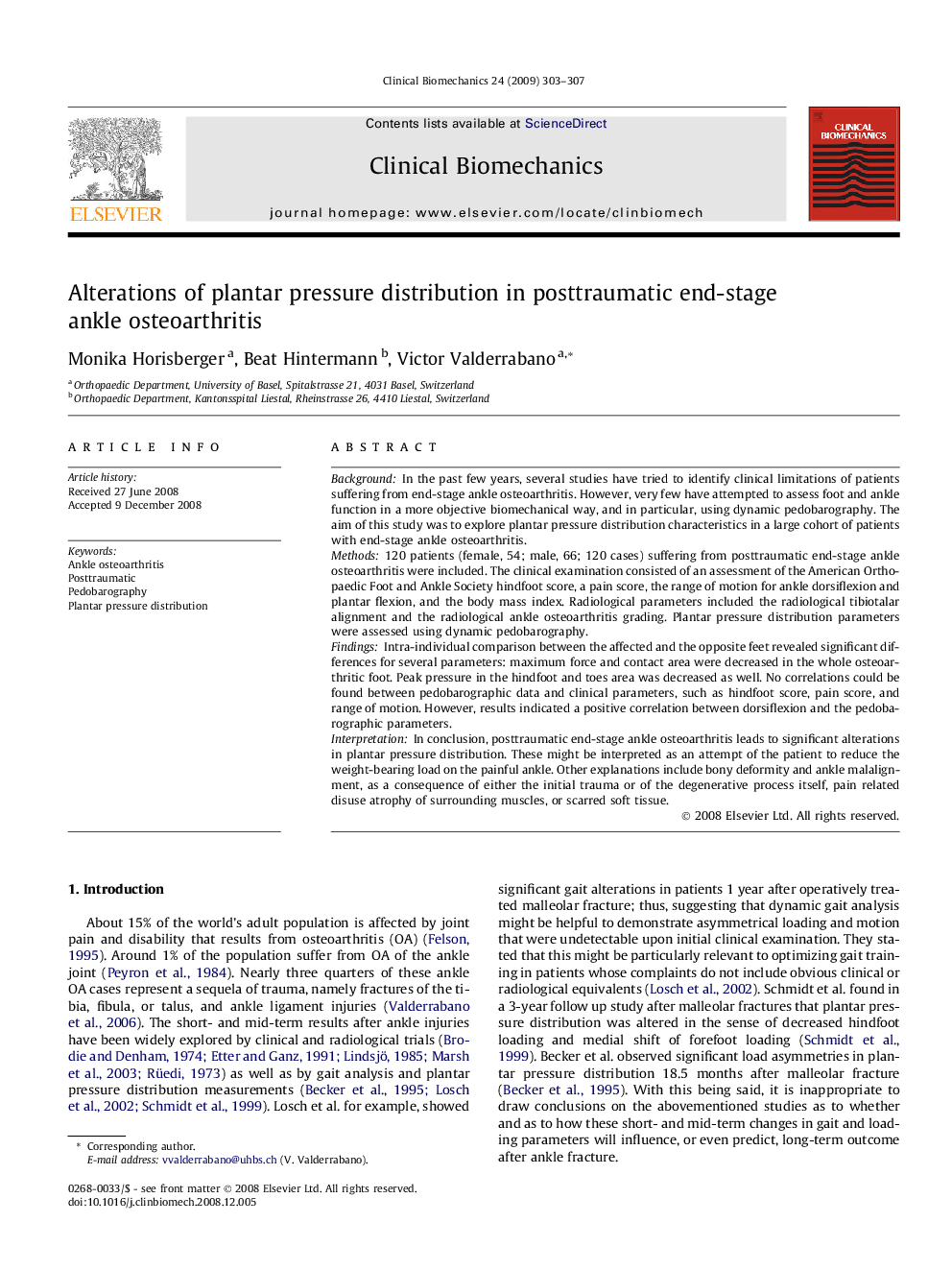| Article ID | Journal | Published Year | Pages | File Type |
|---|---|---|---|---|
| 4050908 | Clinical Biomechanics | 2009 | 5 Pages |
BackgroundIn the past few years, several studies have tried to identify clinical limitations of patients suffering from end-stage ankle osteoarthritis. However, very few have attempted to assess foot and ankle function in a more objective biomechanical way, and in particular, using dynamic pedobarography. The aim of this study was to explore plantar pressure distribution characteristics in a large cohort of patients with end-stage ankle osteoarthritis.Methods120 patients (female, 54; male, 66; 120 cases) suffering from posttraumatic end-stage ankle osteoarthritis were included. The clinical examination consisted of an assessment of the American Orthopaedic Foot and Ankle Society hindfoot score, a pain score, the range of motion for ankle dorsiflexion and plantar flexion, and the body mass index. Radiological parameters included the radiological tibiotalar alignment and the radiological ankle osteoarthritis grading. Plantar pressure distribution parameters were assessed using dynamic pedobarography.FindingsIntra-individual comparison between the affected and the opposite feet revealed significant differences for several parameters: maximum force and contact area were decreased in the whole osteoarthritic foot. Peak pressure in the hindfoot and toes area was decreased as well. No correlations could be found between pedobarographic data and clinical parameters, such as hindfoot score, pain score, and range of motion. However, results indicated a positive correlation between dorsiflexion and the pedobarographic parameters.InterpretationIn conclusion, posttraumatic end-stage ankle osteoarthritis leads to significant alterations in plantar pressure distribution. These might be interpreted as an attempt of the patient to reduce the weight-bearing load on the painful ankle. Other explanations include bony deformity and ankle malalignment, as a consequence of either the initial trauma or of the degenerative process itself, pain related disuse atrophy of surrounding muscles, or scarred soft tissue.
